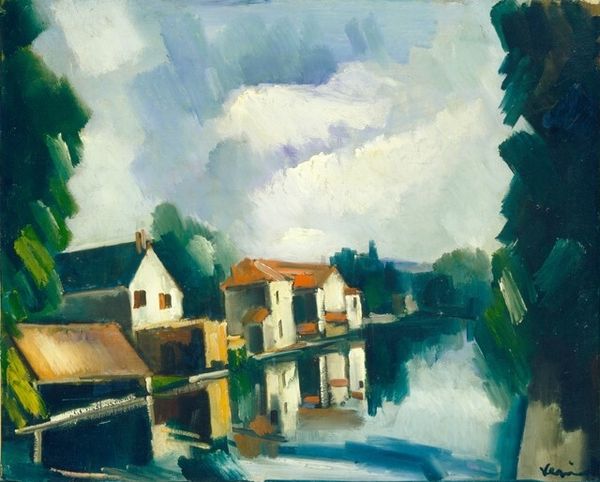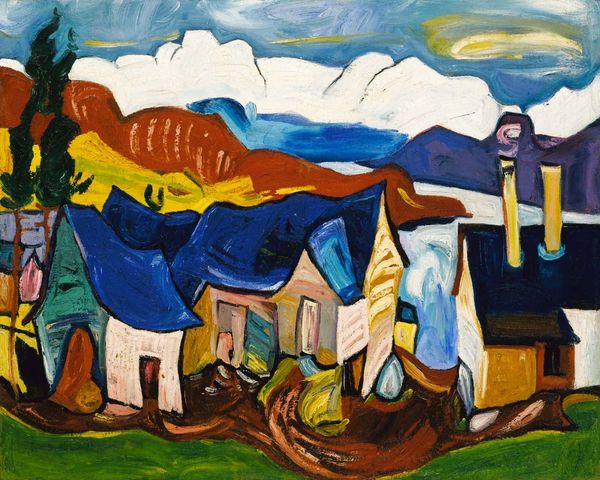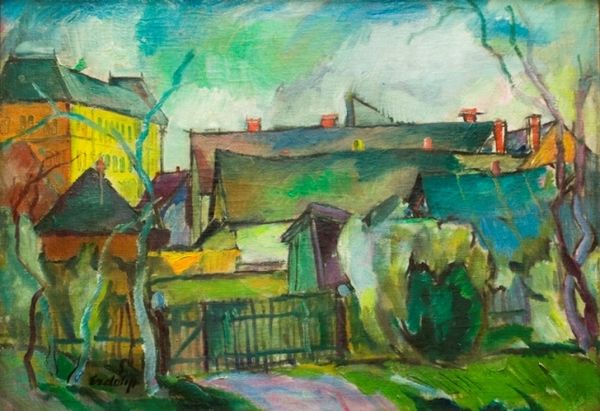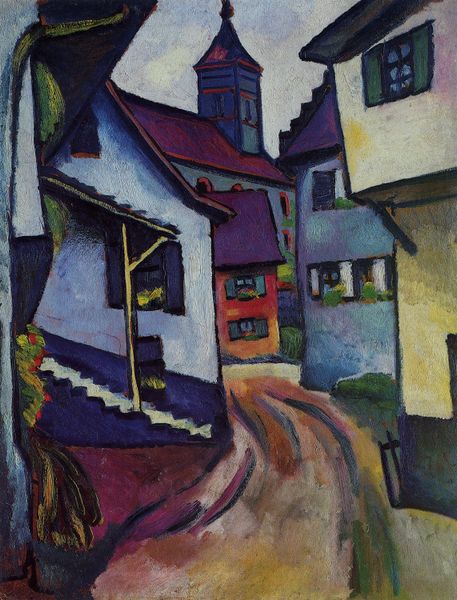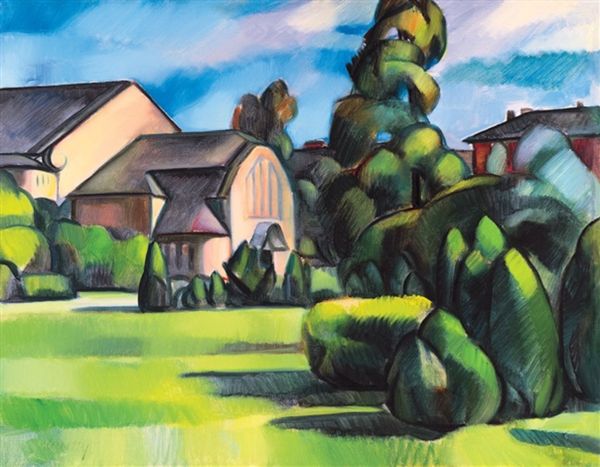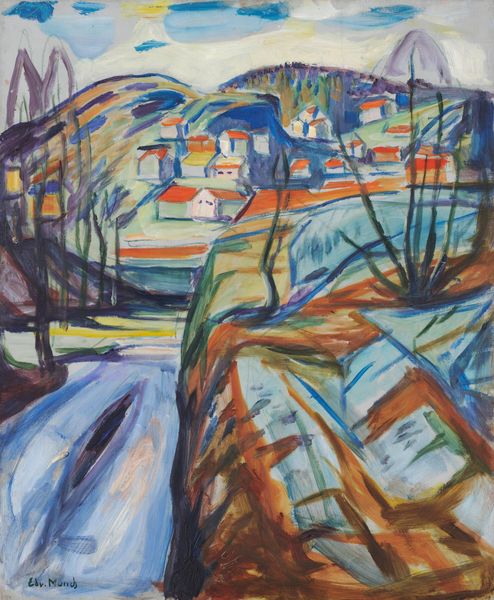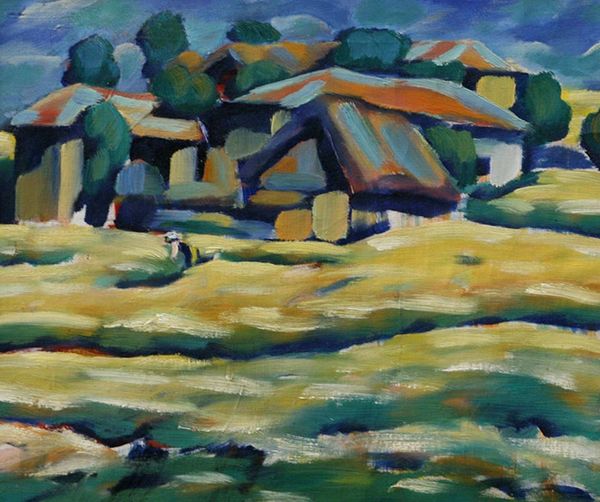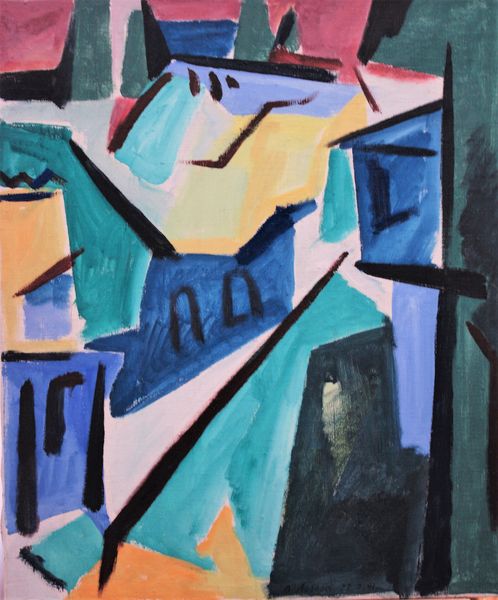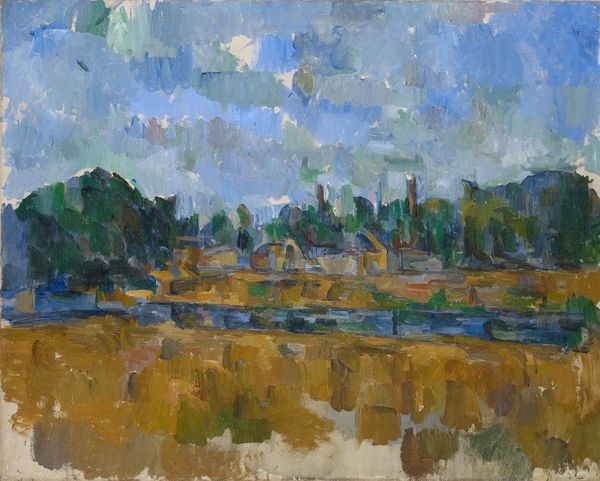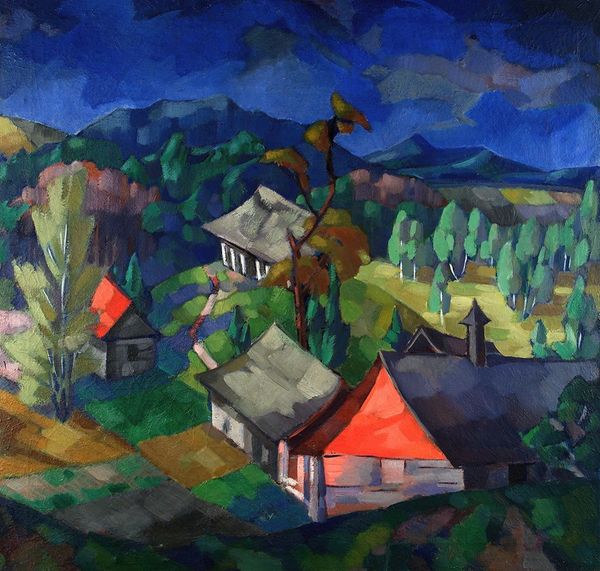
painting, oil-paint
#
painting
#
oil-paint
#
landscape
#
oil painting
#
geometric
#
expressionism
#
cityscape
#
expressionist
Copyright: Kmetty János,Fair Use
Editor: Here we have János Kmetty's "Bridge of Kassa," painted in 1910 using oil. I’m struck by the angularity of the rooftops and the somewhat gloomy, muted color palette. What do you make of this cityscape? Curator: The somber tonality, precisely, resonates with the Symbolist movement that was prevalent at the time. But even more compelling to me is the way the bridge acts as a symbolic threshold. Editor: A threshold? Could you elaborate on that a bit? Curator: Think about what a bridge inherently represents. It’s a connection, a passage from one place to another, both physically and metaphorically. Consider also the Expressionist influence; the emotional weight isn't just in what's depicted, but how it’s depicted. What might crossing this bridge have meant for people of that time, facing the uncertainty of a pre-war world? Editor: So the artist isn't just painting a landscape but capturing a mood of transition or maybe even apprehension. Curator: Precisely! The geometric shapes, too, could symbolize the fracturing of traditional social structures. Every line, every angle contributes to the overall feeling of unease and change. Editor: It's fascinating how the bridge becomes more than just a structure. I’ll never look at cityscapes quite the same way again. Curator: And I hope you recognize now how artistic symbols are not fixed; they reflect and shape our perception, and connect the past to the present.
Comments
No comments
Be the first to comment and join the conversation on the ultimate creative platform.


